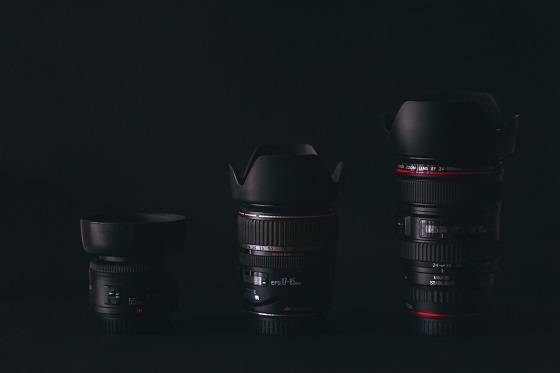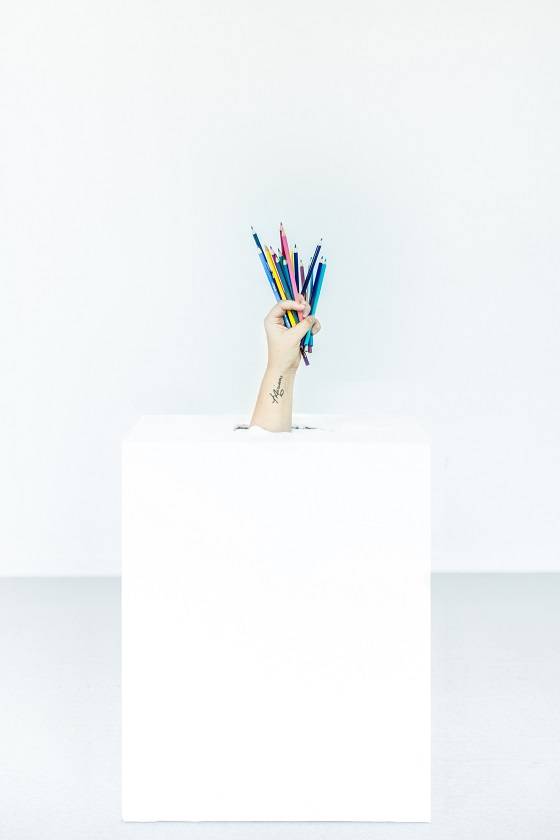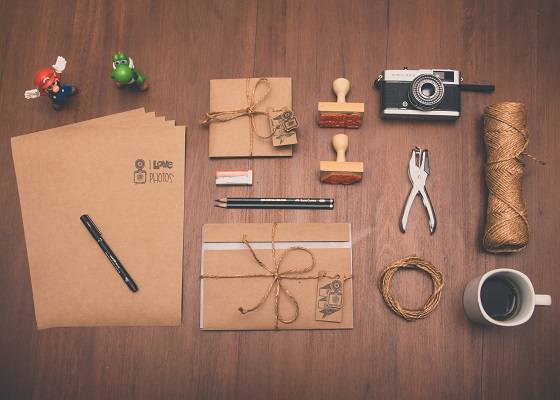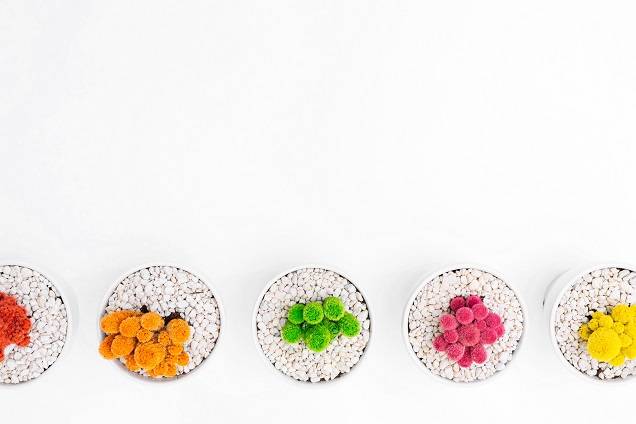The quick answer for how to save money on printing is to understand what works for you. To achieve this you have to see your collateral through the eyes of the intended audience. This will determine how much you should be spending on print and where you can lower your costs.
Essentially, the question you need to ask yourself is: “Is it effective?”.
Here are a few ways to get a good answer.

Clarify
Know what you want – and make it happen.
Whether it’s a marketing campaign, a sales meeting or business stationery for staff, ask yourself what it is you want to achieve before deciding on what to order. In the long run, doing this can save you money. For example:
As a marketer, I want to inform a particular type of person about x and inspire them to do this particular action.
I am a business owner, in a sales meeting. I want to deliver this particular information to secure the deal.
As an administrator, I want to foster a certain culture towards internal communications.
Knowing who you want to communicate with, what you want to say, where you will say it and how you want the target to respond inspire will enable you to determine the optimal medium and necessary print collateral that will achieve that for you. The keyword being “necessary”, only doing what is necessary will ensure you spend your money in the right way.
Here are a couple of things to evaluate that can help you with cutting costs:
[Related: A printer’s tips on flyer design, printing, and distribution]

Evaluate
Double down on proven methods! What is working? What has worked before?
Knowing your objectives you are a step closer to determining if something worked.
Now, for past print collateral, you may not have active tracking in place. Which may make it difficult to gauge the success. However, one method you can try is to check your existing data, sales data, for example, to see what is the average lead closure time. That is the time between someone finding out about you to making the actual purchase. This information is available in either your analytics platform if you’re an e-commerce company or your CRM platform. Know your average closure time. This enables you to correlate any changes in sales with campaigns that were launched within the average lead closure time. This will give you an idea of what works, it is more accurate if all other marketing remains consistent during that same time period.
All is not lost if you don’t have that kind of data. You can start implementing other methods to measure the success of your print campaigns going forward. You just need to put in the time to set it up properly from the beginning.
Quick pointers: How to measure the success of your print collateral.
If you want your target audience to visit your website then try using specific subdomains, subfolders or landing pages. For example, you can use “buy.companyname.co.za” or “companyname.co.za/buy” that takes people to a specific landing page. The trick is to use a unique landing page per print collateral that can only be accessed from one traffic source, I.e. a unique landing page for your flyers and a unique landing page for your pull-up banners.
You can use Unbounce.com to create landing pages, this also removes the landing page from search to ensure the traffic is from only one source. Talk to your website manager to create subdomains or vanity URLs. You can also use QR codes to make it easier for mobile users.
If you don’t have the luxury of creating multiple landing pages, then you can also use:
Call tracking and get a unique contact number per collateral. Conveniently, you can use services such as Call Tracking to achieve this.
Coupon codes and vouchers will allow you to send people to the same destination and the coupon code they use will let you know where they came from.
Ask your target audience how they found you. You can embed a questionnaire on your website, customer service can ask any callers, and you can include the question in a post-sales email.
Create 3 categories of print material – all you need is the right data:
- Crucial business stationery – e.g. Business cards, presentation folders and notepads.
- Effective promotional items – e.g. Flyers from campaign x and pamphlets from campaign y
- Collateral that doesn’t work or is not used – e.g. bumper stickers
Each method will require an initial investment of time and money, but the data generated will let you know how many people responded to your collateral as intended. Eventually, optimising your print collateral will pay off the initial cost in the long term.

Size
[Related: Your business stationery checklist]
Upsize, downsize – it doesn’t matter. Just make sure it’s the RIGHT size.
Ask yourself, what is the most necessary size to get the message across? This depends on where you will use the collateral. So think about who you will be giving or showing the collateral to, where this will be and what do you want them to do with it. The format can change the costs drastically. Particularly when you multiply that format by the number of copies.
Listen to your gut and choose the right Printer for you.
At a young age, I observed most money-savvy adults never did all their shopping at one retail store. Even if that store offered everything they needed. They would always find the best price and quality match by comparing different stores throughout South Africa. This was often achieved just by reading leaflets in newspapers or magazines to save money where they can.
The #1 lesson for print?
While it is convenient to source all of your print from one printing company, shopping around and sourcing quotes and samples from different suppliers can help you find the ultimate price and quality match for certain collateral. You may find that one printer is great for digital jobs, another for litho and another for large formats. Do the work to put a detailed quote together and send it to multiple printers, from there you can award the job to the best quote.
Even if you have a preferred printer, it does not hurt to source quotes from time to time. This will also make you more confident about the kind of price you should be paying. Additionally, with Printulu, you can get the quote instantly on our website, a great time saver.

Colour
Choose the Necessary Colour and Finish
Full colour versus black and white only? Lamination versus none?
Some items do need full colour and/or lamination. Some don’t. Ask for a quote on both options. While it may delay the quote, at least you will know where you can reduce costs if need be. You want to be sure that you get high-quality goods at an affordable price.
Also, look out for the black only, or full colour on one side, options on our website. For most products, you can choose to have full colour on both sides or on one side. For some products, you can elect to print in black and white only options, such as the inner pages of our brochures and PUR bind booklets for example.
Ask yourself what your target audience will respond to and if any extra finishes are necessary to maximise the impact of your collateral.
Make sure your design stands out from the crowd.
The design is a major part of the printing cost, especially if you are creating a brand-new design.
We have a post on minimising your design costs here. The summary:
- Write a good brief – define the who, what, why and where.
- Find and build a relationship with the right designer.
- Use the internet to help find the right designer at the right cost.
- Do it yourself – if you have no other option.

Repurpose
Re-purpose it for your needs.
You may already have some collateral left over from previous campaigns. If these items are not time sensitive then consider repurposing them in other contexts.
Incorporate them into sales meetings, for example, or use them for internal marketing campaigns. You can also place them alongside promotions in your store, use them at your next event or expo stand or send them directly to prospects via mail. The designs are also suitable for your website and social media as a banner, header image or downloadable file.
Establish a Proven Process that works for you!
Make it apparent to your colleagues that you are managing the printing costs. Explain that certain criteria need to be met before anything can be approved for print. Discouraging wasteful usage can drastically reduce the amount you spend on print. Use the above guidelines as a checklist to help create this process.

Minimise
The Bottom Line.
Clear objectives. Establishing clear goals will determine what needs to be printed and what does not to reduce costs.
Measure. Measuring the success of your print collateral on a regular basis will allow you to spend on what is working and minimise wastage.
Size matters. Determining how you need to display or distribute the collateral will help you determine the right, cost-effective, format.
Compare quotes. Even though you have your preferred print service supplier, build a database of competitive suppliers so you always get the best quote.
Colour and finish. Consider including these only if they will maximise the impact of your print.
Design. A good brief, the right designer, use the internet and DIY.
Repurpose. Any collateral that isn’t time sensitive can be used in a number of contexts.
Establish a process. Create some easy-to-follow guidelines that sales, marketing and administrative people can use to order only what is necessary and effective. You can use this blog post as a guideline.
Adopting this approach will allow you to minimise your printing costs, and also potentially maximise the impact of your print collateral in the long term.
Related:
- 4 ways to save money on graphic design
- Your business stationery checklist
- A printer’s tips on flyer design, printing, and distribution





